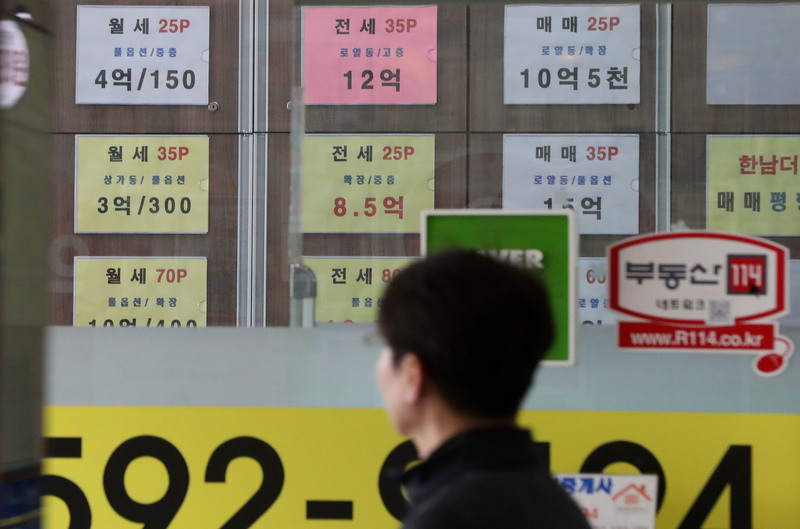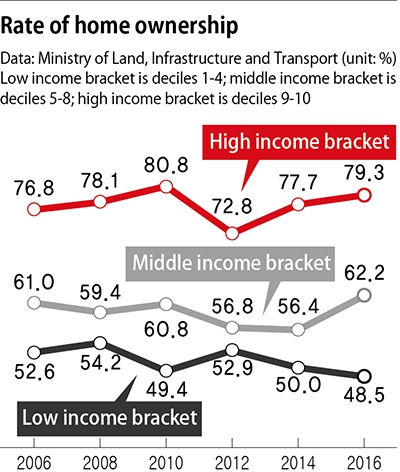
A real estate agency in Seoul’s Gangnam district (Yonhap News)
A report on housing conditions in 2016 released by the Ministry of Land, Infrastructure and Transport (MOLIT) on Apr. 25 showed over 60% of households renting nationwide to be doing so under a monthly rental arrangement. The number testifies to the shift from key money deposits to monthly rentals as the main approach in the South Korean housing rental market.
The arrival of the “monthly rent era” was heralded in 2012 when monthly rental arrangements first outnumbered key money deposits at 50.5% of the total. The increase beyond 60% shows that monthly rental has now taken over as the universal format for rental contracts. The percentages of households in and around Seoul on monthly rental arrangements also passed 50% for the first time, rising 7.2 percentage points to 53.3% last year from 46.1% in 2014.

Rate of home ownership
One noteworthy finding in the study was the marked deterioration of housing conditions over the past two years for low-income households, or those in the first to fourth income deciles. Analysis of housing occupancy formats by income bracket showed a far greater percentage of low-income residents living under monthly rental (33.9%) rather than key money deposits (12.9%) arrangements, not including the 46.2% who owned their own homes. Among the middle- and high-income brackets, representing respectively the fifth to eighth and ninth to tenth income deciles, home ownership was up from 2014. But for the low-income bracket, the rate was down from 48.5%.
The trend appeared traceable to the relatively larger rise in prices for small-scale housing than for medium- or large-scale housing over the past two years, even as household incomes for low earners have failed to rise substantially. Other apparent factors included low interest rates and rising rents, which have driven a recent increase in investment in small-scale housing by wealthy individuals seeking profits.
The rent-to-income ratio (RIR), or the median rental price divided by the median household monthly income, stood at 18.1% last year, down slightly from 20.3% in 2012. But the ratio of average rent to average household monthly income was higher at 21.4% for 2016. This translates into monthly residential costs of 1.055 million won (US$940) for a three-person household earning the average monthly income of 4.93 million won (US$4,370) for an urban worker in South Korea.
The average length of time from becoming a head of household to acquiring a first home fell from 6.9 years in 2014 to 6.7 years last year. MOLIT attributed the shift to trends in late marriage and household independence, which have resulted in people becoming heads of household later and using their income from this time to acquire homes.
The percentage of houses failing to meet MOLIT’s minimum residential standards - which take into account minimum per capita floor space and the presence of a bathroom - remained at its 2014 level of 5.4% of all households, or 990,000 homes. But the actual number of inadequate houses was tallied at 1.03 million, up from 40,000 in 2014. Per capita floor area was 33.2 square meters, down 0.2 square meters from two years earlier. The indicators suggest little improvements in housing conditions for vulnerable low-income residents of “goshiwon” units, flophouses, and semi-underground rental units.
By Choi Jong-hoon, business correspondent
Please direct questions or comments to [english@hani.co.kr]





